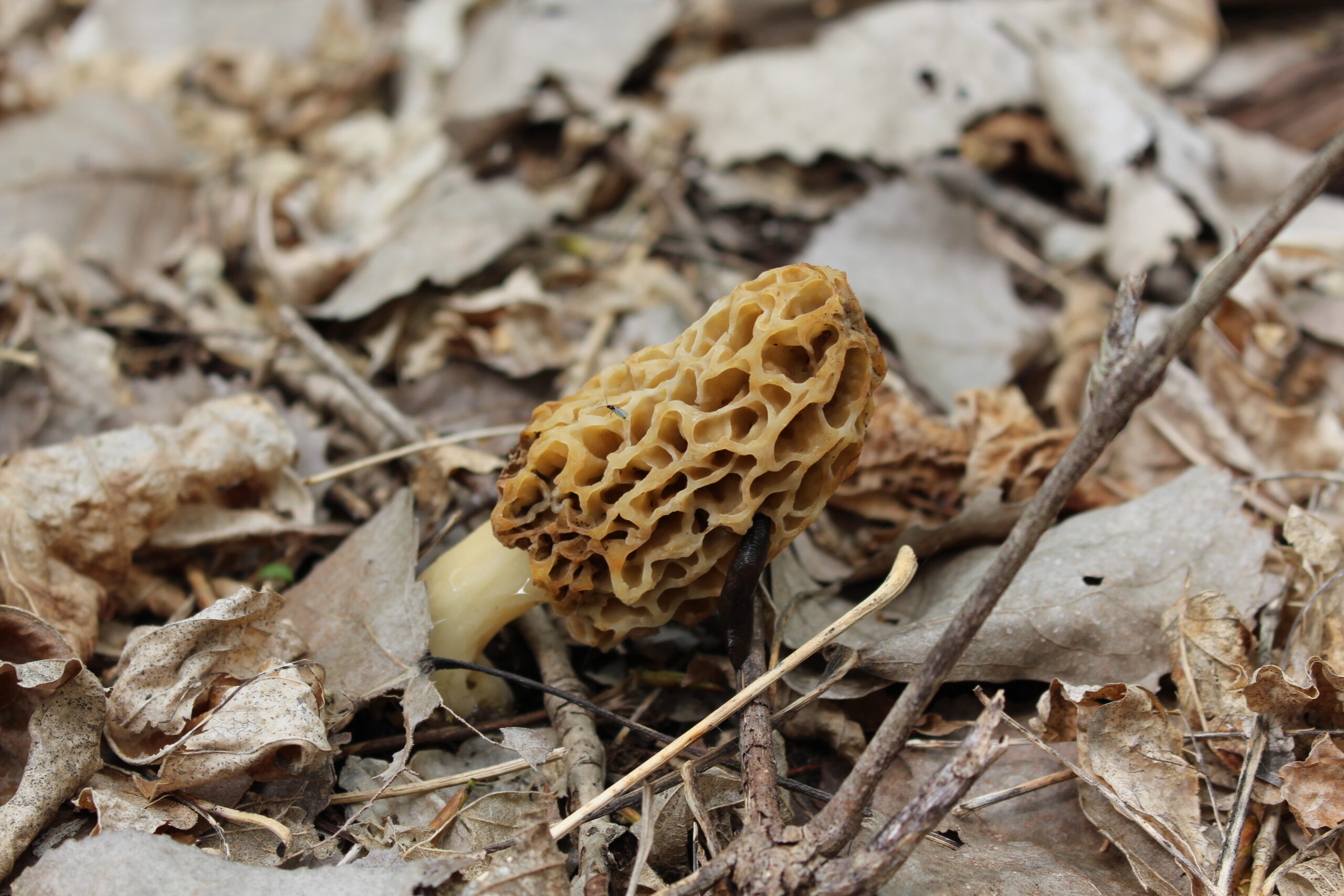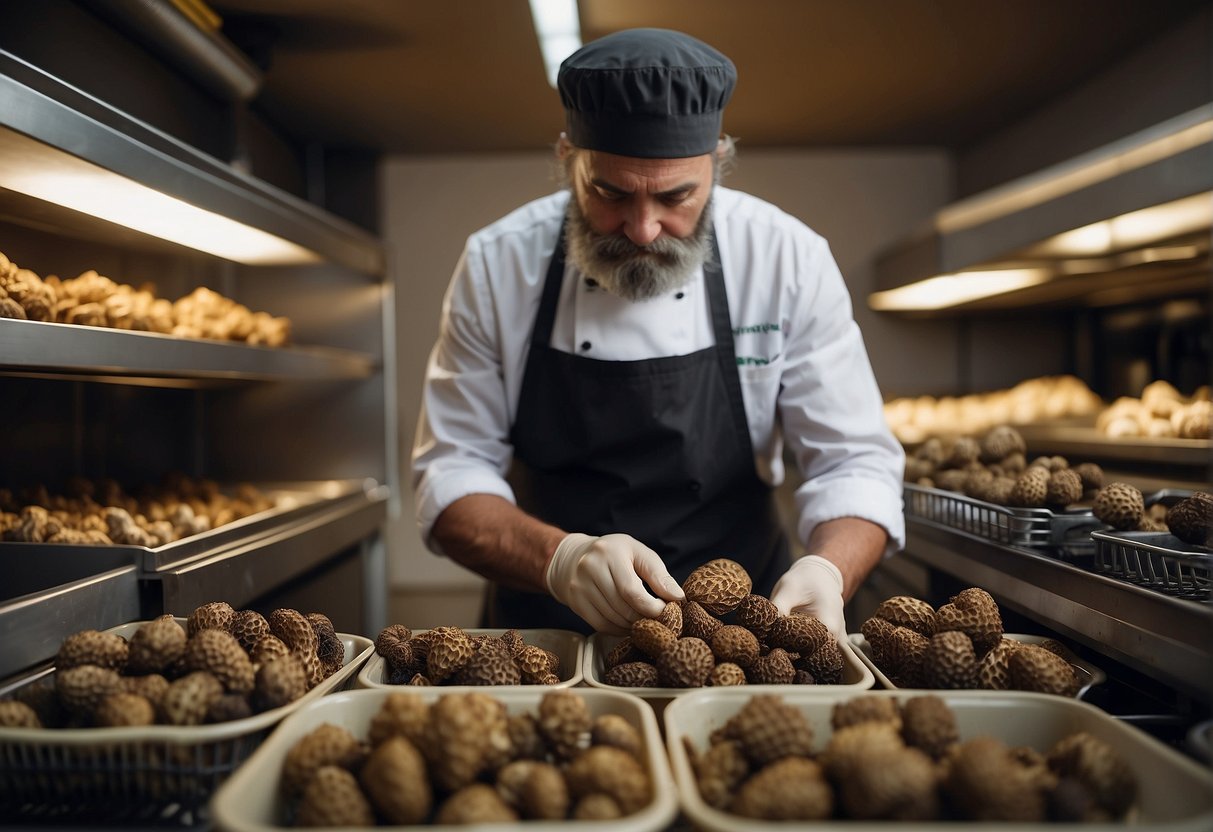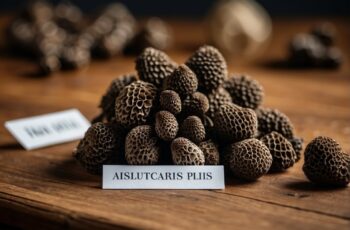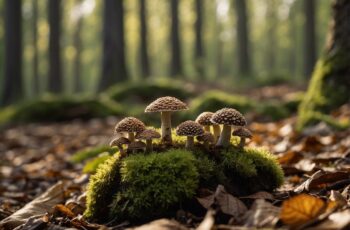As you trek through the diverse landscapes of Indiana during the spring, you might be lucky enough to stumble upon one of nature’s hidden gems: the morel mushroom. These distinct fungi, sought after by veteran foragers and curious beginners alike, are not only a culinary delight but also a sign of the ecosystem’s health. In Indiana, the arrival of morel mushrooms marks a much-anticipated time of year when the woods come alive with those in pursuit of these elusive treasures.

Understanding the habitat and characteristics of morel mushrooms is key to a successful hunt. Indiana offers a rich variety of woods and forests where morels thrive, often found in areas with moist soil and decaying wood—a perfect environment for these fungi to grow. While hunting for morels, you should keep your eyes peeled for the telltale honeycomb-like cap, which can range in color from tan to dark brown.
Equipped with the right knowledge and a sharp eye, you’re set to join the ranks of those who find joy in the simplicity of foraging and the reward of a fresh harvest. Remember to be respectful of nature and adhere to local foraging laws, ensuring these mushroom marvels are around for seasons to come. Happy hunting!
Identifying Morel Mushrooms
In the woods of Indiana, morels are known for their distinctive characteristics which make them a prized find during foraging excursions. Here’s how you can accurately pinpoint these elusive fungi.
Visual Characteristics
Morel mushrooms are distinct from other fungi due to their unique honeycomb texture covering the cap. The cap is attached directly to the stem and is completely hollow, just like the stem. Morels can grow to a variety of sizes but typically range from 2 to 12 inches in height.
Morel Varieties in Indiana
Indiana boasts several morel types, mainly yellow morels and black morels. The yellow morels, often found in forested areas, exhibit a paler color compared to their darker cousins. Black morels tend to appear earlier in the spring and are frequently associated with areas that have experienced a burn.
Toxic Look-Alikes
When hunting for morels, it’s essential to discern them from their toxic twins. False morels exhibit a similar appearance but are not hollow when cut open. Knowing this key difference is crucial—consuming the wrong mushroom can lead to a harmful mistake. Always forage with certainty and consider consulting an experienced guide.
Hunting Morels in Indiana
Indiana’s morel mushroom season offers a blend of nature exploration and the thrill of the hunt. As a forager, you need to be well-informed about the best times and places for hunting morels and understand the critical techniques and regulations for a safe and successful foray into the woods.
Best Time of Year
The peak season for hunting morels in Indiana is during spring, thanks to the mixture of warm soil temperatures and spring rains. More specifically, when soil temperatures reach into the 50s Fahrenheit, which typically occurs from mid-March to late April, you’re in prime morel hunting time.
Ideal Hunting Spots
Morels thrive in woodlands with a mixture of trees, particularly elm, ash, and poplar. Southern Indiana’s forests and county parks are hotspots for morels, prolific following the damp conditions brought by spring rainfalls. Look for sandy soils on north or west-facing slopes and around decaying trees, a favorite environment for these elusive mushrooms.
Foraging Techniques
A refined approach to your mushroom hunt will increase your chances of success. Begin by hiking slowly through wooded property, keeping your eyes peeled for the distinctive honeycomb caps. Foraging along the base of dead or dying trees, especially elm trees, often yields good results. Move gently across the slopes to avoid disturbing the delicate forest floor or damaging potential morel hiding places.
State Regulations and Safety
It’s vital to understand both state parks restrictions and private property laws when hunting for morels. Indiana’s regulations allow foraging for personal use, but always check for any state-specific rules or county ordinances. As a forager, you must also prioritize safety. Dress appropriately for the terrain, watch out for hazardous wildlife, and ensure you’re capable of identifying morels correctly to avoid mistaking them for toxic varieties.
Morel Habitat and Ecology
As an enthusiast of the outdoors, you know that Morel mushrooms, or Morchella, thrive in environments that offer a symbiotic relationship with specific trees and particular soil and climate conditions. Grasping the specifics of these aspects is key to successful foraging.
Symbiosis With Trees
Morel mushrooms have a fascinating ecological relationship with trees. They are often found in proximity to Elm trees, especially those that are dying or dead, as they provide the ideal nutritional balance for morels to flourish. The intricate honeycomb texture of morels is a signature trait, and spotting these near potential tree partners is a sign that you’ve hit the right habitat.
Soil and Climate Conditions
The soil temperatures and climate are critical for morel growth. Morels prefer sandy soils that warm quickly in the spring, reaching the temperature sweet spot of 45 to 50 degrees Fahrenheit. The Indiana Morel mushroom season generally follows suit with the environment’s conditions, as the seasonal temps provide cues for growth. Moreover, nature‘s inclusion of other flora like ramps and indicators like active turkeys can signal that morel forests are primed for a productive season.
From Forest to Kitchen

Once you’ve triumphantly emerged from the woods with your bounty of morel mushrooms, it’s time to turn those earthy gems from a forager’s prize into a gourmet delight in your kitchen.
Cleaning and Preparing
To begin with, gently brush off any dirt from your morels using a soft brush; this will preserve their delicate structure. If necessary, rinse them quickly under cold water. Given that morels are sponge mushrooms, submerging them can lead them to become soggy. Instead, halve them lengthwise to remove any lingering dirt, insects, or debris.
- Do: Use a soft brush
- Don’t: Soak for long periods
Cooking and Recipes
Morels have a unique taste that is highly prized in the culinary world, often described as earthy, nutty, and meaty. To highlight their flavor, sautée the morels in butter with garlic for a simple yet elegant dish. Recipes for morel mushrooms can range from sophisticated creations involving fine ingredients like chanterelles to hearty, rustic fare. Always ensure they’re cooked well, as consuming raw morels can be unhealthy.
- Simple Sauté:
- Melt butter in a skillet
- Add minced garlic and morels
- Sauté until golden
- Pair with: Red meats, pasta, or as a gourmet pizza topping
Preservation and Storage
If you have an abundance of morels and want to enjoy them throughout the year, drying is an effective method for preservation. Lay them out on a screen or string them on a thread in a dry, ventilated space. Once they’re completely dry, store them in an airtight container. Rehydrate your morels by soaking them in water when you’re ready to use them, which also produces a flavorful broth that can be used in other recipes.
- To Dry:
- Place on a screen or string
- Store in an airtight container after drying
Note: Fresh morels can be kept in the refrigerator for up to a week, in a paper bag, which allows them to “breathe.” Avoid plastic bags, as they can cause condensation and spoilage.


